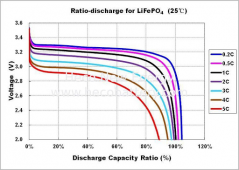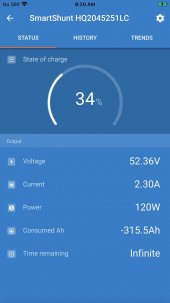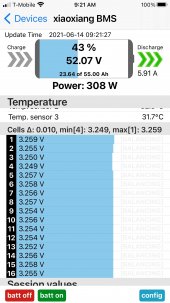mesquito_creek
New Member
- Joined
- Feb 8, 2021
- Messages
- 146
I am looking to add some insurance to my system and need advise on where to stretch the capabilities. I am running 4000 watts of pv, 21,000 watt hours of batts and a mppsolar LV6048 to power an RV off grid. RV has two Colman 15000 btu AC units, residential fridge and lots of vampires. Minus the AC load I think I over killed the system and for winter and spring I hardly ever used more than maybe 20% of the batteries on any given 24 hour cycle.
with summer time here I need to run AC overnight. During the day from 10-4 I can run 2 AC and the base load off of PV for the most part and head into the evening with my batts topped off.
I am sitting here at 8 am and the sun is so far to the north it’s almost hitting the back of my solar array and I am wondering if I make sense to add more panel pointing west and east and just extend my solar production. I thought is if I can produce more watts sooner in the day and longer into the evening that is more economical than adding more batteries. My mppt charger has an open input for another 4000 watts not being used. I would get some used panels and point 2000 watts west and 2000 watts east? Is this a good strategy or would the experts say always just add more panels facing south.
My weak spot is I don’t have 2 or 3 full days of storage under AC loads. I am in southern Utah 37 degrees and I am willing to go short on storage because the sun is nearly always available. If it is cloudy then my AC requires way less use and I might have plenty of battery.
with summer time here I need to run AC overnight. During the day from 10-4 I can run 2 AC and the base load off of PV for the most part and head into the evening with my batts topped off.
I am sitting here at 8 am and the sun is so far to the north it’s almost hitting the back of my solar array and I am wondering if I make sense to add more panel pointing west and east and just extend my solar production. I thought is if I can produce more watts sooner in the day and longer into the evening that is more economical than adding more batteries. My mppt charger has an open input for another 4000 watts not being used. I would get some used panels and point 2000 watts west and 2000 watts east? Is this a good strategy or would the experts say always just add more panels facing south.
My weak spot is I don’t have 2 or 3 full days of storage under AC loads. I am in southern Utah 37 degrees and I am willing to go short on storage because the sun is nearly always available. If it is cloudy then my AC requires way less use and I might have plenty of battery.







